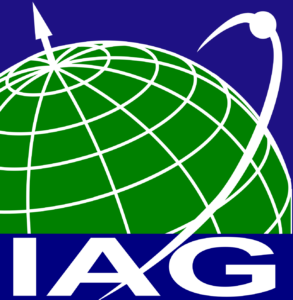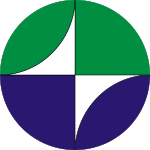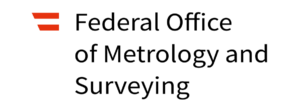Joint Working Groups 4.3:
JWG 4.3.1: Real-time ionosphere monitoring and modeling (joint with IGS and GGOS)
Chair: Zishen Li (China)
Vice-Chair: Heng Yang (China)
Terms of Reference
This WG focuses on the methodology development for real-time ionosphere monitoring and modeling with the use of multiple space-geodetic observations duringthe upcoming maximum activity of solar cycle 25. This involves integrating ground-based ionospheric data from the multi-GNSS systems (e.g. GPS, Galileo and BeiDou), ionosonde measurements, as well as the spaceborne observations from altimetry, DORIS, GNSS Precise Orbit Determination (POD) and Radio Occultations (RO). Additionally, the in-situ observations, such as Langmuir Probe (LP), are also taken into account. The approaches for the retrieval of precise ionospheric parameters (e.g.Total Electron Content, electron density), generation of two-and/or three-dimensionalionosphere maps on regional and global scales, independent validation and combinationof ionospheric information from different providers in real-time will be developed and analyzed. The dissemination of real-time ionospheric information following RTCM, 5G, satellite internet access or other standards will be discussed in support of both scientific researches and technological applications. Connections to IGS, iGMAS, IDS, IRI, NeQuick and other communities will also be involved for the possible establishmentof sub-groups or experimental campaigns on real-time ionosphere monitoring.
Objectives
- Close connections to different scientific communities (e.g. IGS, iGMAS and IDS) for the coordination of RT/NRT ground-based, spaceborne, and in-situ measurementsin support of real-time ionosphere monitoring.
- Assessment campaigns, e.g. every 6 months, of the performance of real-time iono-sphere models/services subjected to different solar activity intensities, such as accuracy, availability and latency. This will allow to compare different approaches forreal-time ionosphere modeling by considering the combination of multi-constellation observations with distinct characteristics (e.g. biases and time latencies).
- Development of methods for the NRT/RT independent assessment, utilizing direct ionospheric measurements from altimetry satellites like JASON-3, and alternative methods such as in-situ ionospheric measurements and DORIS observations.
- Share the IGS methods for combination of real-time global/regional real-time ionospheric information from different RT-IGS providers. The ionospheric analysis centers are welcome to consider the possibility of joining RT-IGS service.
- Discussions on the distribution of real-time ionospheric information within scientific and technological communities (e.g. target parameter, data format and time latency).
- Generation and dissemination of experimental two-and/or three-dimensional ionospheric information in support of real-time ionosphere monitoring and associated scientific applications.
- Possible joint sub-groups or experimental campaigns on real-time ionosphere monitoring in close scientific collaboration with IGS and IDS WGs, COSPAR, URSI, IRI and NeQuick WGs, among others.
Members
- Zishen Li (China); Chair
- Heng Yang (China); Vice-Chair
- Alberto Garcia-Rigo (Spain)
- Alexis Blot (France)
- Andre Hauschild (Germany)
- Andreas Goss (Germany)
- Andrzej Krankowski (Poland)
- Attila Komjathy (USA)
- German Olivares (Spain)
- Grzegorz Nykiel (Poland)
- Kenji Nakayama (Japan)
- Libo Liu (China)
- Manuel Hernández-Pajares (Spain)
- Nicolas Bergeot (Belgium)
- Nngbo Wang (China)
- Qile Zhao (China)
- Raul Orús (Netherlands)
- Reza Ghoddousi-Fard (Canada)
- Wookyoung Lee (Korea)
- Yunbin Yuan (China)
- Zhizhao Liu (China-Hong Kong)
Corresponding Members
- Ang Li (China)
- Cheng Wang (China)
- Eren Erdogan (Germany)
- Xingliang Huo (China)
- Xiaodong Ren (China)
JWG 4.3.6: Validation of ionospheric models for positioningapplications(joint with IGS)
Chair: Anna Krypiak-Gregorczyk (Poland)
Vice-Chair: Xiaodong Ren (China)
Terms of Reference
Global and regional ionospheric models are routinely used in Space Weather studies, but also in high-precision applications like e.g. GNSS positioning. There are currently many analysis centers and research groups providing operational and test ionospheric maps. The global ionospheric maps (GIMs) provided as an official product by the IGS Ionosphere Working Group (IIWG) are developed by performing a weighted mean ofthe various Analysis Centers (AC) VTEC maps. There are also important empirical models like the International Reference Ionosphere (IRI) or NeQuick that are based on statistical analysis of the results of measurements. Reliable modeling of the ionospheric propagation errors is still one of the most challenging aspects of precise GNSS positioning and GNSS-based geodetic and geodynamic studies. However, IGS ACs and other groups use different mathematical models and estimation techniques resulting in different resolutions, accuracies and time delays of their products. Therefore, there is a need to compare and validate existing ionospheric models in order to better understand their performance and quality, and to foster the usage of ionospheric models in geosciences community.
Objectives
- Comparison of GNSS-derived ionospheric maps and empirical models;
- Validation of ionospheric models in precise GNSS positioning;
- Validation of existing and new ionospheric models for different geomagnetic activity levels;
- Development of new validation techniques.
Members
- Anna Krypiak-Gregorczyk (Poland); Chair
- Xiaodong Ren (China); Vice-Chair
- Ang Liu (China)
- Attila Komjathy (USA)
- Beata Milanowska (Poland)
- Grzegorz Nykiel (Poland)
- Haixia Lyu (China)
- Mainul Hoque (Germany)
- Manuel Hernández-Pajares (Spain)
- Michael Schmidt (Germany)
- Peng Chen (China)
- Qi Liu (Spain)
- Reza Ghoddousi-Fard (Canada)
- Shengfeng Gu (China)
- Wojciech Jarmołowski (Poland)
JWG 4.3.7: Machine learning for the atmosphere(joint with GGOS)
Chair: Yury Yasyukevich (Russia)
Vice-Chair: Venkata Ratnam D (India)
Terms of Reference
Machine learning (ML) techniques are becoming more and more popular in different fields of research. ML is used for different tasks: forecasting, classification, clustering,anomaly detection and others. Scientists use different ML algorithms to create models of the ionosphere and atmosphere, to reveal effects from different sources, and to cluster or classify the data. Today new ML-based ionospheric models appear regularly. However, there are almost no rules (in contrast to other ML fields) on how to compare the models, and how to describe a model and its code. That often prevents reproducing the results and undermines the ML reliability. Open science would assist significantly in overcoming some of such problems. Within this WG, we will focus on how to provide reproducable ML-based results and to benefit more from ML, and especially to find out which new fields of atmospheric physics could involve ML. Today, the atmospheric community does not reveal trends, benefits and shortcomings of different ML approaches for particular tasks. We suppose that ML (as quite a new technique) could assist in involving young scientists in the problems of atmosphere and ionosphere physics – promoting ML within the atmospheric and ionospheric community can also be a task of the WG.
Objectives
- Review the current state of ML applications for the ionosphere.
- Identify areas within atmospheric and ionospheric research which could benefit fromML algorithms.
- Initiate discussions to uncover potential pitfalls associated with the application of ML techniques in the above contexts.
- Develop and establish guidelines for the publication of source code and datasets inarticles utilizing ML for atmospheric and ionospheric science. Demonstrate theseguidelines through practical application in our articles.
- Formulate recommendations and prepare a dataset for the ionospheric ML-basedmodel testing.
- Promote the adoption of ML approaches among young scientists through seminars,lectures, and dedicated conference sections.
- Perform experiments showing tangible benefits from ML for atmospheric andionospheric studies.
- Organizing special issues dedicated to ML application in the ionosphere or atmosphere and actively reviewing corresponding papers to encourage dissemination ofvaluable research in this field.
Members
- Yury Yasyukevich (Russia); Chair
- Venkata Ratnam D (India); Vice-Chair
- Peng Chen (China)
- Baocheng Zhang (China)
- Fabricio S. Prol (Finland)
- Elvira Astafyeva (France)
- Aleksei Zhukov (Igdore)
- Seyyed Reza Ghaffari-Razin (Iran)
- Yuval Reuveni (Israel)
- Angela Melgarejo-Morales (Mexico)
- Daniel Okoh (Nigeria)
- John Bosco Habarulema (South Africa)
- Erman Şentürk (Türkiye)
- Lei Liu (USA)
- Raul Orus Perez (Netherlands)



